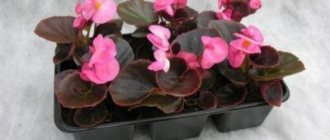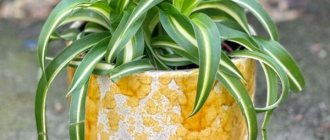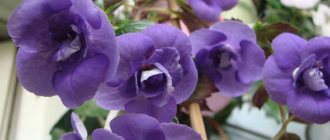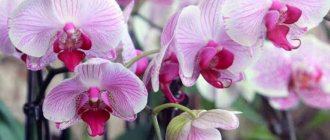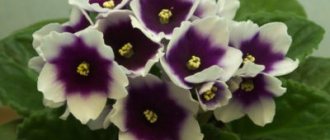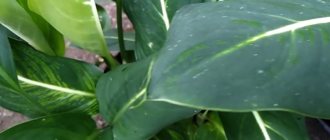Chlorophytum is a very hardy flower that can be grown indoors. It belongs to the family of perennial plants. Gorgeous bushes have lush green foliage, sometimes with white and yellow stripes, which adds even more attractiveness to the plant. What gives the plant a special charm are its elastic sprouts, at the ends of which there are small copies of the mother bush.
Chlorophytum is a fairly popular indoor plant. Around the 70-80s of the last century, it occupied its place of honor in kindergartens, schools, clinics and other public buildings.
Then, unpretentiousness in care led to the fact that almost all people who at least a little love flowers began to grow chlorophytum at home.
History of the legend
Chlorophytum was brought to Europe more than 200 years ago from tropical rainforests. Even Johann Goethe, a German writer, grew this amazing flower and, having admired the chlorophytum, wrote his immortal works.
Scientists did not know which family to assign it to. They never came to a consensus. Some say this is the Agavov family, others say the Asparazhev family.
Thanks to its unusual appearance, chlorophytum has acquired many other names: Merry Family, Splash of Champagne, Green Lily. The flower has another name: “Bride’s Veil” for its resemblance to wedding decorations.
It was difficult for the flower to live in the wild, but when it moved into people’s homes, it simply “bloomed.” Owners of this flower should know that it kills germs, saturates the air with oxygen, and purifies the indoor air of harmful substances.
If you plant 3-4 bushes around the house, they will clear up to 10 square meters. meters of area from harmful toxins and pathogens. In addition to cleansing and saturating the space with oxygen, the flower moisturizes the air.
More favorable conditions for keeping chlorophytum
The most optimal air temperature for the habitat of a chlorophytum flower should be in the range of 15-18 degrees, despite the fact that it can easily tolerate a drop in air temperature of up to 8 degrees.
It can be placed in rooms whose windows face both the north and south. In the second case, the leaves will be more juicy and bright, and even more so if the foliage of this variety is prone to the appearance of white stripes on the leaves.
Chlorophytum feels equally good in rooms with dry and humid air. There is no need to regularly spray the flower. But to maintain the aesthetic appearance and health of the plant, its foliage should be washed approximately once a month under running, warm water.
- Features of choosing flower seeds
Gardena garden equipment
Wedding decorated in green
The leaves of the flower are quite delicate, so under no circumstances should you wipe them with a cloth, only a light bath in the shower. The most optimal watering schedule is as follows: in winter, water once every seven days, in hot summer, every 2 days.
Everyone who has seen chlorophytum in person or in a photo at least once in their life strives to get their hands on this wonderful flower.
Description of the plant
It is perhaps difficult to find a person who does not know what chlorophytum looks like. The flower stands out among other flower crops with thin leaves of different colors that hang down in a cascade.
Chlorophytum has a lush, even elegant appearance at any time of the year. If its leaves curl, an even more magnificent and beautiful shape is obtained.
With good care, chlorophytum will outshine many domestic specimens with its splendor and beauty. Today, several varieties of this crop have been developed, which differ in the width and color of the foliage. Their color can be striped or plain.
Chlorophytum grows as a compact bush. Over time, it begins to produce small rosettes, which, when planted in another container, quickly take root and produce a new lush flower.
Characteristic features of all varieties:
- The bush has leaves in the form of a lancet or oval 20-50 centimeters high. They emerge immediately from the root rosette.
- Leaves that grow up to 60 cm have a beautiful bend.
- The green plate in some species has a light or white border, rarely a yellow stripe in the center of the leaf.
- The roots are large, collected in a bunch. When there is a shortage of water, small nodules form on the roots, where there is a supply of moisture. Due to them, the plant tolerates drought in the wild tropics.
- In spring, flexible peduncles grow from the center of the rosette, on which small white flowers appear. The exotic blooms all summer long.
- After flowering, seed pods or shoots with aerial roots form on the stem.
- The life of a flower lasts 10-15 years.
Dropping off the children
This is the simplest and most common method of propagating chlorophytum.
The daughter rosette is carefully separated from the adult plant and placed in a pot of soil. Care as for ordinary chlorophytum. Sometimes, in order to achieve greater branching of the roots, the shoot is placed in water before planting.
For better root development, you can place the plant shoot in water before planting.
Spectacular chlorophytum in a glass pot
Popular types and varieties: names with photos
In the wild, chlorophytum has more than 200 varieties. As a rule, in tropical forests this plant lives on the bark and roots of trees. Only a few varieties of this crop are grown at home.
A photograph of each species will demonstrate the beauty of this green pet. Other species out of 200 are very rare. They can be seen in large greenhouses only by the most avid gardeners.
Chlorophytum crested (Chlorophytum Сomosum)
Most often in homes you can see Crested Chlorophytum with long, oblong leaves that grow from the very root. With good care, the flower rosette can become very lush, growing up to 50 cm in diameter.
A distinctive feature of Crested Chlorophytum are long shoots, at the end of which lush shoots with thin leaves and rarely flowers are formed. Thanks to this feature, it is often compared to a fountain or “splash of champagne.”
Cape Chlorophytum (Chlorophytum Capense)
Cape chlorophytum has a special shape and color of foliage, which is why it differs from other varieties. The flower itself grows compactly, but can produce leaves up to 50-60 cm in length.
The border of the foliage is painted in cream shades. For this rarity, the flower is very popular. As it grows, it becomes lush and attracts attention.
Chlorophytum Bonnie
Chlorophytum Bonnie is an attractive plant that fits perfectly into any apartment decor. Its curly leaves look great both in a hanging pot and on a high stand.
The exotic throws out long branches with rosettes. The rosettes can be planted in a pot, and they will again produce a lush bush of charming chlorophytum.
Chlorophytum must be planted in a house where there are a lot of household and electronic appliances and the floor is covered with synthetic materials. It ranks number one among green pets with amazing indoor air purifying abilities.
If there are 2-3 bushes in the room, then attacks in asthmatics are reduced, coughing is reduced in those who suffer from diseases of the lungs and the entire respiratory system,
Winged chlorophytum or orange chlorophytum (Chlorophytum Amaniense)
This variety is endowed with wide leaves with a bright orange color in the rosette itself. The flower grows over 50 centimeters in height and has a luxurious exotic appearance. This is a wonderful decoration for any interior.
Bonnie curly or curly
Unlike Crested Chlorophytum, the curly variety is smaller in size. Its leaf blades are so dashingly curled into spirals that they give Bonnie beautiful curls.
In the center the leaves are colored in light shades, and at the edges they are green. It is unpretentious and has the same beneficial properties as other varieties of this culture.
Ocean (Ocean)
"Ocean", brought to us from South America, takes root well at home. It grows up to 25 centimeters in height.
The bush grows without a stem. Greenery immediately begins to grow from the roots. Its rather wide green leaves with white edges can go down 60 centimeters.
Laxum (Chlorophytum Laxum)
Chlorophytum Laxum is an indoor flower of incredible beauty and is very rare. But if you become the owner of this beauty, it will bring good mood and comfort to your home.
The thin, delicate leaves with a white border are mesmerizing. The size of the variety is small, so it can fit on any shelf, decorating the interior.
This is a very rare variety of evergreen Chlorophytum, and therefore is highly valued by gardeners.
Atlantic
The flower grows 20-30 centimeters in height. Loves diffused light and warmth. Chlorophytum blooms in summer, releasing buds collected in groups of 1-4 pieces. Their white color with an orange tip gives the flower a rare originality. The variety was bred in Holland quite recently, in 2007.
It is distinguished by a neat rosette, up to 20 cm in diameter. In the center of the leaves there is a white, rather wide stripe with a pale green border. The leaves are 25 cm long and 2 cm wide.
Lemon
A short, compact plant that can grow in any conditions, but loves good light and regular watering.
Chlorophytum "Lemon" is a luxurious flower with glossy, solid green leaves with a light stripe. The green mass is collected in bunches that resemble tufts. In spring it pleases with white stars.
The bush has 2 tiers of shoots, and with good care it can produce a third tier. Looks incredibly beautiful on a high stand with the leaves cascading down.
Variegata
Chlorophytum Variegata came to us from South America. It grows very quickly, acquiring beautiful curved leaves right from the root. In spring it produces thin stems on which small white flowers bloom, and then tiny rosettes.
For comfort, chlorophytum requires a comfortable pot, good lighting, a humid and warm corner, and regular watering. For good development of green mass, nutritious soil and fertilizers are required.
Let's take a closer look at how to care for tropical exotics.
Planting, cultivation and care
Chlorophytum crested is an easy plant to grow that does not require too much skill. If you want the leaves to be clearly colored, you need to position it so that it receives indirect sunlight. In this case, the drawing of patterns will become very noticeable. However, be careful, too much sun can burn the leaves. If you place the pot in the shade, the color of the leaves will become more uniform.
In thickenings on the roots, chlorophytum stores water and nutrients. Thanks to this, it will survive a short drought and does not require frequent feeding.
To achieve maximum decorativeness, do not forget to trim off faded leaves, the presence of which spoils the appearance of the plant.
Watering
Caring for chlorophytum at home primarily includes regular watering. Chlorophytum loves slightly moist soil. Water the chlorophytum when the top layer of soil in the pot dries out a little. Watering should be done with soft, filtered, settled water at room temperature. Water for irrigation should be free of chlorine and fluorine. Otherwise, the leaves may turn yellow and dry out.
In summer, chlorophytum is watered frequently (every 2-3 days), but moderately; in winter, it is watered once a week. Slight overdrying will not harm the plant because its roots have the ability to store water. Short-term drought can stimulate chlorophytum to form more shoots and bloom faster. More destructive is overwatering, which will cause the roots and inside of the rosette to begin to rot.
Over time, the roots can grow so large that they fill almost the entire pot. When watering from above, the roots may not reach water. Therefore, in the case of such specimens, it is recommended to water from below - placing the pot in a basin of water for about 15-30 minutes. The water should be at room temperature and must be filtered. Overgrown roots are a sign that the chlorophytum needs to be replanted this coming spring.
The "Green Orange" variety is less resistant to overwatering and drying out, but once the balance in watering is selected, it will not cause problems. If you have a hygrometer, water when the device shows 3.
After each watering, do not forget to drain excess water from the stand!
Chlorophytum is sensitive to dry air; it is necessary to regularly spray its leaves. A drop in humidity will cause their ends to dry out. In winter, when heating radiators often operate at full power, it is worth placing a container of water or wet moss next to the greenery, or placing pots on a tray with wet pebbles, and laying water-soaked towels on the radiators themselves. Humidifiers will also have a positive effect on the microclimate.
The leaves do not need to be washed under a stream of water. Leaf blades must be systematically cleaned of dust with a damp cloth.
Fertilizer
Chlorophytum is fertilized regularly from March to October. Due to its intensive growth, it experiences a great need for nutrients. But you cannot feed chlorophytum too much, this will lead to soil salinity, which it does not tolerate. The best option is to apply moderate regular doses of organic fertilizers (vermicompost). When fertilizing with mineral fertilizers, they are applied in the summer - every 3 weeks; in winter, the plant is not fertilized.
Transfer
Rapid growth makes frequent replanting of chlorophytum mandatory. For adult plants, replanting should be carried out every year in the spring; young specimens may need to be replanted 2 times a year - in spring and autumn.
The signal that chlorophytum needs replanting is the roots sticking out of the holes in the bottom of the pot.
The pots need to be filled with a thick layer of drainage to protect the plant from stagnation of water, which can cause rotting of the roots.
Reproduction
Propagation of chlorophytum is extremely easy, thanks to the generously produced stems the plant produces, on which small daughter rosettes develop. The rosettes should be torn from the stem - if they do not yet have roots, they must first be rooted in water, root development will occur in about 10 days. After the roots appear, you need to place them in a container filled with a substrate with the addition of peat, coconut fiber and sand. It is important that the substrate for seedlings is loose, tender, and retains moisture. Then the sockets will definitely take root very quickly. The substrate in pots should be slightly moist; young seedlings are very susceptible to root rot.
Old, well-established chlorophytums can reproduce by dividing the root ball. To do this, you need to carefully remove it from the pot, carefully remove the remnants of the old soil between the roots, then use your hands to separate the lump of roots into parts. The leaves of each cutting should be shortened, then placed in a container with soil.
Pests, diseases and care errors
Chlorophytum is easy to grow and is not particularly susceptible to disease. Most of his ailments are the result of errors in care. The most dangerous thing for a plant is overwatering during watering, which leads to rot.
Chlorophytum leaves are quite fragile and can break. Therefore, it is better not to move it too often.
Signs of improper care:
- If the tips of the leaves turn yellow and dry out, what should I do? This is the result of too dry air and insufficient spraying. It is worth increasing the humidity in the room, placing the pot on wet pebbles, and spraying more often.
- If the leaves of chlorophytum turn brown, this is due to excessive watering and excessive fertilization. Sunburn may cause brown spots to appear on the leaves.
- Faded leaves are a consequence of lack of light. You need to move the pot to a more illuminated place.
- The leaves are flabby, without shine - there are not enough nutrients. Intensive fertilizing with fertilizers for indoor flowers is necessary every 2 weeks, all spring and summer.
- Root rot is usually the result of overwatering. When the leaves turn brown and the first spots appear at their base, this means the entire rosette is rotting. In this case, remove the plant from the ground and check the roots. If rot is noticed, remove the affected parts and plant the chlorophytum in fresh soil.
- The leaves are transparent and spongy - this means the room is too cold. The pot needs to be moved to a warmer place.
Insects that attack chlorophytum:
- Aphids are small insects that may or may not have wings and resemble small flies. Aphids suck the sap of plants, especially affecting young leaves and shoots. A sign of the appearance of aphids is curling, yellowing, and final drying of the affected flower fragments.
- Spider mites - a sign of their presence are delicate white cobwebs on the underside of the leaf blade; Insects cause leaves to turn yellow and their growth to slow.
- Thrips are tiny, comma-shaped insects that are hard to see with the naked eye and are black or brown. When thrips attack chlorophytum, characteristic patterns appear on the leaves - tubes hollowed out by pests. As a result of the action of pests, the leaves will turn yellow and dry out.
- Scale insects feed on the underside of leaves; they resemble convex and hard swellings. After their attack, the leaves turn yellow and are often covered with a specific sticky dew secreted by pests.
- If there are cats in the house, the flower may become their victim. The structure of the grass that is sown for cats to help them get rid of lickable hair is very similar to the leaves of chlorophytum. Cats love to chew them. Fortunately, the grass is not toxic, but it is best to place the plant out of the reach of cats.
To get rid of pests, it is necessary to spray with an appropriate insecticide.
Methods for propagating chlorophytum
Chlorophytum is easily propagated by dividing the bush, children and seeds.
Seeds
How to propagate chlorophytum by seeds? Seeds can be bought at the store. They are first soaked for a day, placed on a damp cloth. You can soak it on damp toilet paper, placing several layers in a food container with a lid.
If the sprouts hatch, they should be planted in any moist soil, covered with film, and placed in a warm place.
When the shoots appear, transplant them into a container for germination and the appearance of true leaves. Then they are picked and transplanted one by one into a separate container.
By division
It is better to propagate by division when transplanting. When you start replanting an adult specimen, divide it into several parts, leaving roots on each part. Transplant each part into a pot with nutritious soil and water.
Children rooting rosettes
The best propagation is by rosettes that hang on flexible shoots. Plant the baby with the aerial root immediately in a separate pot. In a couple of weeks it will take root and grow, overgrown with foliage.
If in doubt, place the roots of the rosette in a glass of water. When root shoots appear, transplant into a flowerpot.
Features of transplantation
Young, actively growing chlorophytums can be replanted annually. Adult specimens need a new pot every 2-3 seasons, despite the rapid development and large volume of the root system.
The soil
Chlorophytum will grow even in heavy garden or garden soil, but it develops slowly and may refuse to bloom. A loose, light substrate with a neutral reaction is more suitable for the plant. We recommend the ready-made mixture “Universal” or “For decorative foliage”.
The soil itself is made from the following components:
- leaf soil - 3 parts;
- turf – 1;
- sand – 1.
Pot
The container for chlorophytum should be large enough - a powerful root system develops quickly. Any material, if the owners are confident that they will regularly replant.
Even in this case, the flower tends to grow to the walls. The root of chlorophytum has to be separated with a knife; sometimes it is easier to cut a plastic container or break a clay one to get out an earthen lump. It’s just a shame to spoil an expensive beautiful pot.
Many owners specifically plant the plant in a soft transport container and replant it only after it becomes deformed. Such a pot is cheap, it doesn’t hurt to cut it.
There must be drainage holes in the container. It is advisable that the side does not go inside - during transplantation, the root cones are injured when the owners take out the earthen ball.
Each time the chlorophytum is moved into a container 2-3 cm larger than the previous one. If you take a large pot, the development of the rosette will stop, and the flower stalks will not move forward until the flower entwines the clump.
Transplantation process
The operation is simple, but guaranteed to be done without damage only with young chlorophytums that have not had time to grow roots. When moving large specimens to a new pot, the underground part is almost always injured.
But experienced gardeners rarely bother to carefully handle the earthen clod. And in botanical gardens, when replanting, they often cut off the lower third of the roots with a sharp knife, and partially break out the side cones. This is done to reduce the volume of the coma, and immediately place the chlorophytum in the original container, adding fresh soil.
Transplantation according to all the rules:
- Take the plant out of the old pot. If necessary, run along the inner walls with the blunt side of a knife, separating the root.
- A container with a diameter of 2-3 cm larger is filled with drainage and a layer of fresh substrate so that the chlorophytum is at the same level as before.
- If necessary, dry or rotting shoots are cleaned.
- An earthen ball is installed in the center.
- Fill the voids with soil.
- They crush and water.
You need to care for chlorophytum at home after transplantation as before. Only the plant that was previously standing on a well-lit windowsill is briefly moved to partial shade.
Diseases, problems, pests and treatment
Chlorophytum almost does not get sick. If spider mites appear, rinse the plant under warm water. Chlorophytum is rarely treated with chemicals. A warm shower is the best treatment for this exotic.
But stagnant water in a container can lead to mold and root rot. After watering, immediately pour out excess water from the tray. Pests such as scale insects, aphids, and spider mites can attack plants that grow on the balcony. Rinse also in a warm shower. If it doesn’t help, then treat with any insecticide.
Growing problems
Chlorophytum is a non-capricious plant, but if there are frequent mistakes in caring for it, the following problems may arise:
| Causes | Solution | |
| The color of the leaves becomes dull. | This phenomenon is caused by planting in a cramped pot, lack of nutrients in the soil or keeping it in the shade. | To correct the situation, you will need to transplant the flower into a larger pot and new soil. It is also worth moving the chlorophytum to a brighter place. |
| The leaves are covered with dry spots of a light brown hue. | Sunburn leads to this. | The plant should be moved to a more shaded place or shaded during the midday hours. Over time it will recover. |
| The leaves of the plant dry out from the tips. | This is how the flower reacts to too hot conditions. | It is advisable to move the chlorophytum to a cooler room. If this is not possible, then you should spray the foliage more often with warm water from a spray bottle. |
| The culture does not produce daughter rosettes. | The plant is cramped in an old pot. | The flower needs to be transplanted into a new, more spacious pot. |
| Chlorophytum leaves lose turgor and fade. | This is caused by insufficient watering. | To correct the situation, it is necessary to moisten the soil more often, and over time the flower will recover. |
| The leaves of the plant are covered with brown-yellow spots. | This often happens due to too hot conditions. | You should increase watering and spray the plant with water more often. |
Chlorophytum will be an excellent choice for beginning gardeners, because almost all types and varieties of this plant have an unpretentious character. Caring for it does not cause much trouble. At the same time, the luscious foliage of the flower looks impressive, and it will bring comfort to any interior, which is confirmed by numerous photos.
FAQ
Most often, gardeners are concerned about the drying tips of the leaves. And one more question - how to relate to the superstitions associated with this flower?
Why do the leaves of chlorophytum turn yellow and dry, what should you do?
Why do the tips of Chlorophytum leaves dry out? This is a fairly common problem. Most often, the ends dry out from the heat in the room. Spray it with a spray bottle and place an open container of water next to it.
Check to see if your flower takes too much fertilizer? Overfeeding is just as harmful as underfeeding.
The tips of the leaves are still drying from insufficient watering. Tropical exotic loves air humidity and watering.
If you do everything correctly and the tips remain dry, then inspect the plant for insects. Among the pests, mealybugs, spider mites, and thrips can attack the flower. Rinse them off in the shower or treat them with Aktar.
Chlorophytum may undergo a natural process of green renewal. Old leaves die off, and then young shoots grow in their place.
This process also begins with the tips of the leaves drying out. Remove the yellow leaf, making way for the young sprout.
Is it possible to leave chlorophytum without care during the holidays?
If you often go on business trips, then wick water the flower or put vermiculite in the soil. It will not let your green pet dry out.
Is it possible to keep chlorophytum at home: the benefits and harms of a kitchen flower
The benefits and harms of flowers have long been of interest to all gardeners. Everyone knows from the first grade that it purifies indoor air from fumes, tobacco smoke, and harmful toxins.
It also absorbs ammonia, carbon monoxide, acetone, benzene, formaldehyde and other harmful compounds.
Flower parasites are also reluctant to attack this exotic crop. And no one knows anything about the harm.
But it can be harmful to children and pets who like to try something new. It is better to place this flower higher away from children so that they cannot reach it. Just the sharp edges of the leaves can injure the delicate skin of the child’s lips.
And if we talk about feng shui, the residents of China claim that this tropical resident brings comfort and peace into the house, protecting the home from bad energy.
The Chinese often give this flower to those who work very hard so that they can relax and have fun a little more.
Is it dangerous for cats?
Many cats love to chew indoor plants. They find them by their pleasant smell. But many green pets can become deadly to them. Chlorophytum often becomes the object of chewing by furry owners.
A cat can be discouraged from the flower if you follow the breeders' recommendations:
- Place or hang the pots as high as possible - out of reach for the prankster.
- Use sprays with a repulsive citrus scent. To prevent the cat from touching the plant, just spray the leaves with citrus juice. You can use a commercial spray.
- If the rosettes are hanging down and “teasing” the cat, then they need to be cut off and placed in other containers.
- Grow a special grass that all cats adore.
- If your cat likes to chew plants, then more vitamins need to be added to the diet.
Is it possible to keep chlorophytum at home?
The flower is recognizable and has gained such popularity because of its unpretentiousness. It is easy to grow and propagate. It will be an excellent start in breeding flora for a novice gardener; it will decorate offices, schools, and hospitals.
Euonymus Winged, Fortune, European and other species
Sometimes people ask a question about chlorophytum for the home: is it good or bad to grow it indoors? Having the oldest roots along with fern, indoor chlorophytum is an excellent filter of magnetic and biofields; it fills the room with a favorable aura and protects against computer and mobile radiation.
Having green foliage purifies and humidifies the air, and it is not poisonous, as many people write on the Internet. With abundant watering, its long leaves evaporate excess moisture. It has the ability to absorb carbon compounds harmful to humans from the air. It is an indispensable assistant in landscaping apartments located near roads, as well as in any apartment near stoves and heating boilers.
Important! The leaves of the plant secrete phytoncides that disinfect the air. The plant absorbs harmful particles contained in the air, releasing pure oxygen in return.
Interesting facts about chlorophytum
It has been noticed that signs and superstitions associated with chlorophytum are only positive.
Feng Shui
According to the teachings of Feng Shui, chlorophytum is the safest plant for a home and its inhabitants. It thoroughly absorbs negative energy and releases positive energy instead.
If suddenly a flower begins to fluff up, produce babies and become prettier right before our eyes, it means that it absorbs all the carbon monoxide, nitrogen and everything that is bad in the house.
It is recommended that after a difficult event, sit down next to the “doctor” and talk about your sorrows. After a few minutes of conversation with chlorophytum, a person will be in a good mood.
It transmits male “Yang” energy. To balance the energy, you can place “female” flowers (violet, crassula) nearby. If the flowerpot is placed on the north side, career advancement or other positive changes in the life of the owners of this plant will begin.
Useful and harmful properties
The flower is one of the best air purifiers for formaldehyde, with an effectiveness rating of 7.8 out of 10. NASA studies have shown that it absorbs carbon monoxide. This can be used in offices or apartments to control tobacco smoke.
Due to its high adaptability to unfavorable conditions, chlorophytum feels good even in the kitchen, where not every indoor plant can survive. It almost does not react to unstable temperature or humidity, frequent ventilation.
The benefits and harms of chlorophytum have yet to be fully studied, but the negative properties of the plant have not yet been identified. But the positive qualities are known:
- juice kills harmful microorganisms, including viruses;
- 4-5 chlorophytums can completely clean and humidify the air in a small room;
- cats readily eat the plant instead of special grass;
- green color calms the nerves.
Winged chlorophytum and laxum
The winged one differs from its fellows in appearance. From the central part of a small rosette emerge wide grooved leaves of a dark green hue, tapering at the top and bottom. Small stems are pinkish or orange. The shoots with flowering rosettes are short. If you want to preserve the bright shades of foliage, then the flower stalks must be removed. You can leave a few of them to obtain seeds. The ornamental plant attracts attention with the contrast of dark green leaves and pinkish-orange petioles. Among the winged chlorophytums there are many original and interesting varieties. For example, “green orange” attracts with its bright contrast of orange petioles and green leaves.
Chlorophytum "orange" is characterized by wide, dark-colored leaves combined with bright stems. Given the sensitivity of the foliage to chemicals, you only need to treat the soil, making sure that the chemicals do not get on the leaf blades.
To prevent chlorophytum “orange” from losing its color, you need to select diffused lighting for it.
Laxum is a rather rare plant with narrow leaves forming a dense bunch. The edge of the leaf blade is bordered by a thin white stripe. Chlorophytum laxum does not reproduce by shoots, but often pleases with the formation of inconspicuous white flowers.
Fairly simple care at home allows you to grow many varieties of chlorophytum without any problems. Moderate temperatures, sufficient watering and diffused sunlight are the ideal conditions that chlorophytum requires. It can withstand variable temperatures, dry days, direct sunlight, and a small amount or excess of minerals. However, it is better to avoid such extreme conditions, as they will certainly affect the appearance of the plant. In spring you can feed the flower with complex fertilizer. It is recommended to replant annually in early spring into spacious containers that allow the roots of the plant to grow.
Bloom
Usually, chlorophytum holders do not ask the question “what to do to make it bloom,” because chlorophytum blooms rather inconspicuously, its flowers do not bring aesthetic joy, and seeds are usually not used for propagation. However, of course, chlorophytum blooms in small, white inflorescences with thin petals on a long thin stem.
How chlorophytum blooms: photo
When does it bloom at home?
From March to September.
How often
Once a year, with good care, if it is not taken care of, it may not bloom. The most common reason for lack of flowering is a pot that is too large, leading to fattening (excessive development of the root system to the detriment of flowering). The solution is to transplant it into a smaller pot.
Reviews and recommendations from flower growers
Particularly popular now is a new product on the flower market - Chlorophytum orchidastrum Green Orange. The Ocean variety, which is a compact, bright bush with yellow-green leaves, is no less in demand. Chlorophytum crested Ocean, as well as varieties Variegata and Lemon, will become a real decoration of any flower collection. Chlorophytum is characterized by rapid growth and is considered one of the most unpretentious indoor plants. However, in summer the flower requires abundant watering. According to reviews from experienced gardeners, windows facing east or west are optimal for growing indoor chlorophytum.
The plant needs bright but diffused lighting. Variegated varieties of chlorophytum cannot be cultivated in the shade: due to lack of lighting, the plant loses its decorative coloring.
Young plants need to be replanted annually, and adults - once every 2-3 years. Transplantation is carried out at the end of winter or beginning of spring.
In spring and summer, small white flowers form on thin stalks, followed by rosettes that can be separated from the parent plant and rooted.
Chlorophytum is called the “green indoor healer”: it helps purify the air from harmful substances and improve indoor humidity, which partly explains its enormous popularity.
Botanical features and homeland of the plant
Currently, more than 200 species of chlorophytum are known. Under natural conditions, the flower grows in warm climates. South Africa is considered to be its homeland. Now the plant is widespread in the tropical zones of the Earth.
Chlorophytum is a herbaceous ornamental perennial with a short stem and a tuberous root system. Leaves are rosette type, oval or lanceolate. The flowers are white, medium-sized. In indoor floriculture, chlorophytum is used as an hanging plant, in single and group plantings.
Difficulties in care
There are several difficulties that beginner gardeners often face. Let's look at each of them separately.
- Variegated species lose color and become solid green. As a rule, there is insufficient lighting. Increase daylight, or place the pot closer to the window.
- The tips of the leaves dry out. Excessive watering, the roots begin to rot, there may be no drainage at the bottom of the pot.
- The leaves are turning yellow. There are several reasons for yellowing of leaves: watering with cold water, the temperature is too high, insufficient watering, insufficient lighting.
- The tips of the leaves turn black. The reason lies in the roots of chlorophytum. Remove the roots from the soil, rinse well under running water, remove dry and rotten roots, and inspect the soil for pests or mold.
- The plant does not bloom. Young plants do not bloom; you may need to wait 2-3 years. Also, the cramped habitat (small pot) does not allow a peduncle to appear.
- The leaf rosette began to rot. Excessive watering, especially during the cold season, or unsuitable substrate.
- The leaves are limp and pale. The temperature is too high, insufficient watering or lack of fertilizers during the growing season.

